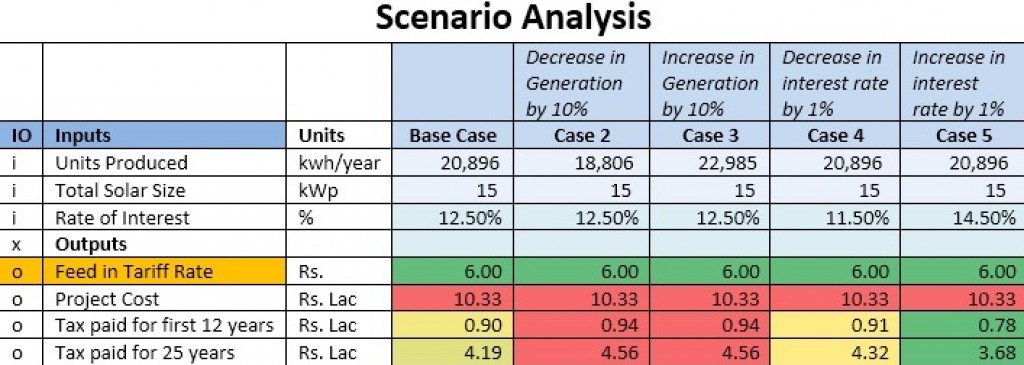Solar Financial Modeling: 9 points you can’t afford to miss out
Any project related to power sector requires a huge amount of investment. Therefore, it is extremely necessary to make financial model and do a thorough analysis for the financial viability of the proposed project prior to any decision regarding the initiation of the project.
Financial Models can be complex and with various elements of Solar projects dependent on policy, financing, resource availability etc. modeling solar projects becomes a significantly complex process.
We, at pManifold, have been working with various project developers, investors and new market entrants involved in grid-scale (both Solar PV and CSP) and rooftop solar projects helping them understand the financials risks and returns of this opportunity. Based on that experience, we have identified 9 points that one should consider while developing a Solar Financial Model. These are,
1. Solar System Specifications
A good solar financial model should capture the technical and geographical information related to solar correctly. The parameters like solar insolation, solar degradation factor over 25 years, cell efficiency, DC-AC rerate factor, etc. plays an important part in defining the project cost and production capacity. This will impact project feasibility and decision making extensively.
2. Project Cost and Subsidies
In Solar PV projects, the Solar System is not the only project cost. The model should also account cost towards land, construction, power conditioning and evacuation systems, tracking systems, insurance, project management, pre-financial charges and more.
In recent years, the driving factor for adoption of solar projects is due to the financial support provided by Central and State Government in the form of subsidies. This should also be a part of the financial model.
Following is the snapshot of the project cost summary developed by pManifold’s financial analysts.

3. Financial Structuring
A large Solar PV project requires higher investment and for that the developer needs to opt for various financial products like fixed term loan, working capital loan, bank guarantee. Hence, a part of the project cost needs to be funded through debt. This debt portion determines the company’s cost of capital and hence the Project IRR and Equity IRR. Financial model should capture debt cost, equity cost, loan period, interest rate and moratorium period.

4. Power Tariff
Power tariff rate is one of the most critical parameters which directly impacts project revenue and payback period. In Solar PV projects, feed in tariff rate and terms and conditions defined as per Power Purchase Agreement (PPA) is vital. The financial model should have the capability to tweak and customize the model to meet power agreements.
In the case of net metering, the consumer category, state and its tariff structure determines the potential saving a consumer can have. As power tariff varies significantly from state to state, hence, the ROI of solar rooftop projects varies across states.
5. Inflation
The typical financial model for Solar project, forecast is generally made for next 25 years. In this period, solar production decreases over time which impacts the project’s top line. In such case, inflation factors like tariff inflation and O&M inflation become key drivers of the model.
6. Accelerated Depreciation Benefit
The biggest advantage solar projects offer to the investor are tax savings. As per Section 32 of Income tax, an investor can claim 80% accelerated depreciation benefit in the first year and remain 20% in a subsequent year. Thus, the solar financial model should account depreciation schedule as per both Income Tax and Companies Act to assess project profitability and tax liability.
7. MAT & Tax Benefits
As per IT Rule, the Solar project developing companies like any other company are liable to pay Minimum Alternative Tax (MAT). A solar financial model should cover calculation of corporate tax, MAT, MAT credit available and MAT credit utilized over 25 years of project life cycle.
8. Scenario Analysis
A financial model is robust only if it has the capability to test different business cases simultaneously and then compare the results. A financial model should allow changing multiple input parameters to predict optimistic, pessimistic and average scenario at one go. A tool supported by good visualization and dashboard is a useful feature a management should look for. Here’s a quick snapshot of how we do it.

9. Assumptions
Financial models are built upon a certain set of assumptions. All assumptions should be documented and supported by references to ensure robustness of the model. Vetting by an independent certified professional is also recommended


